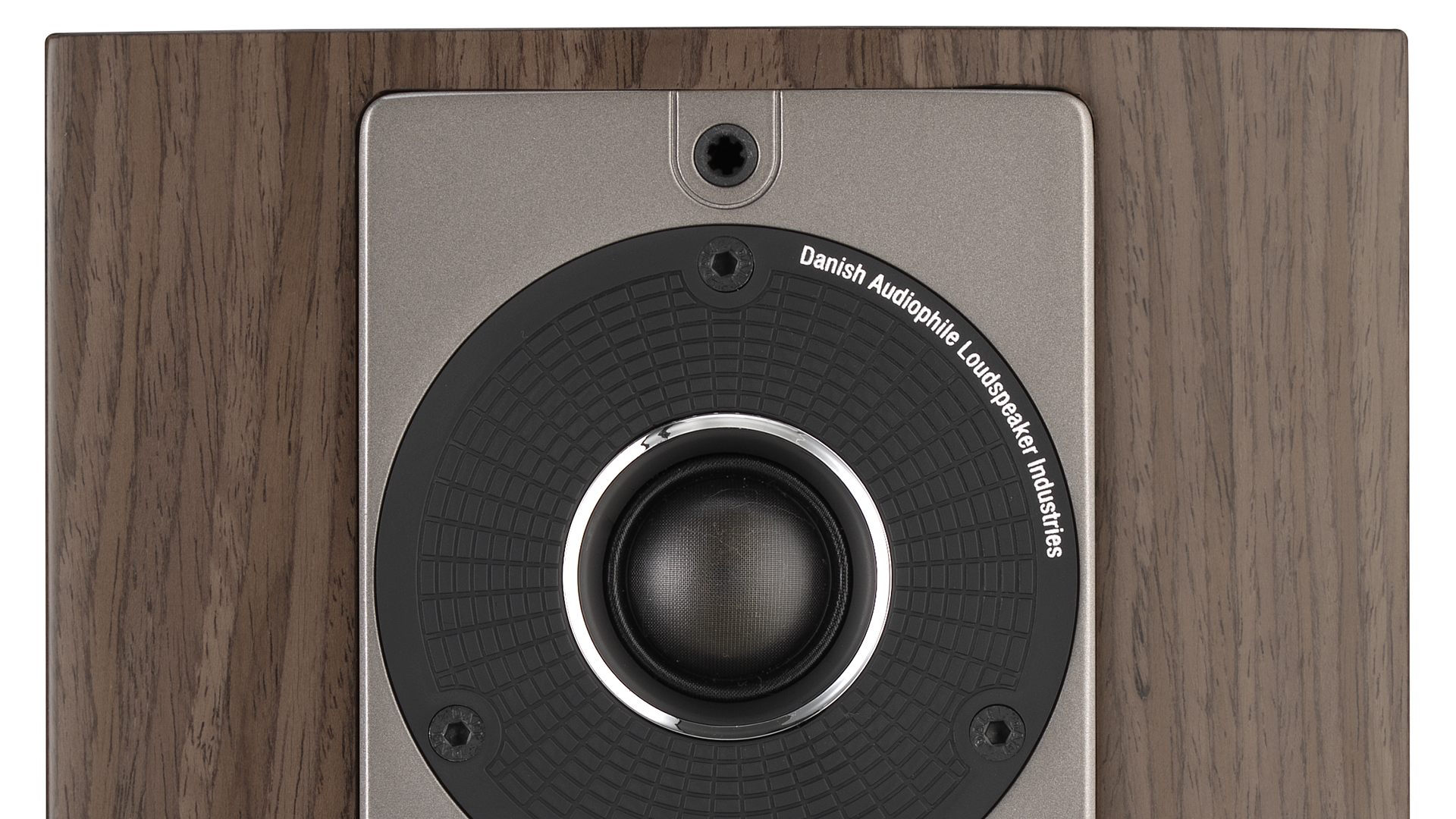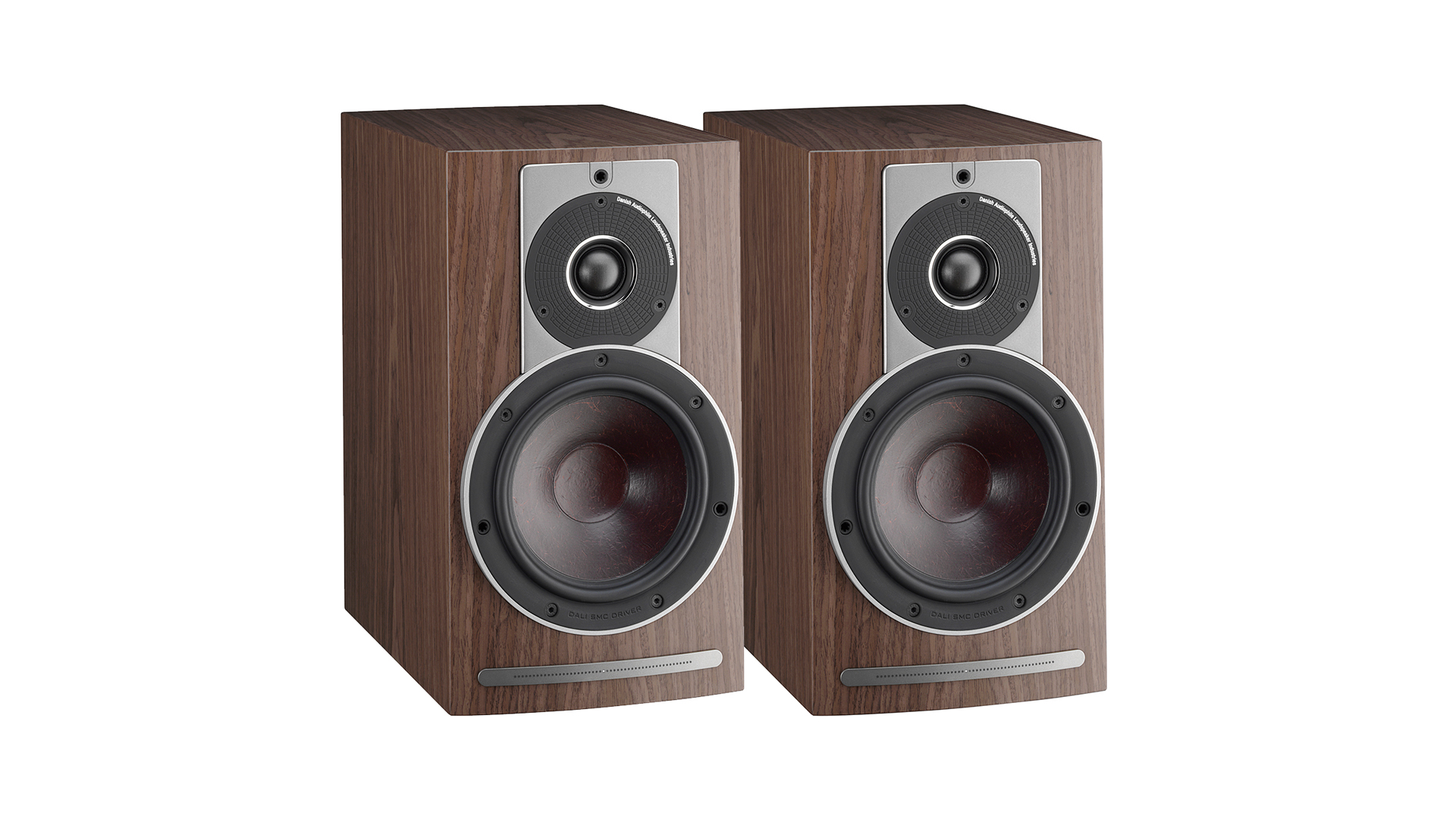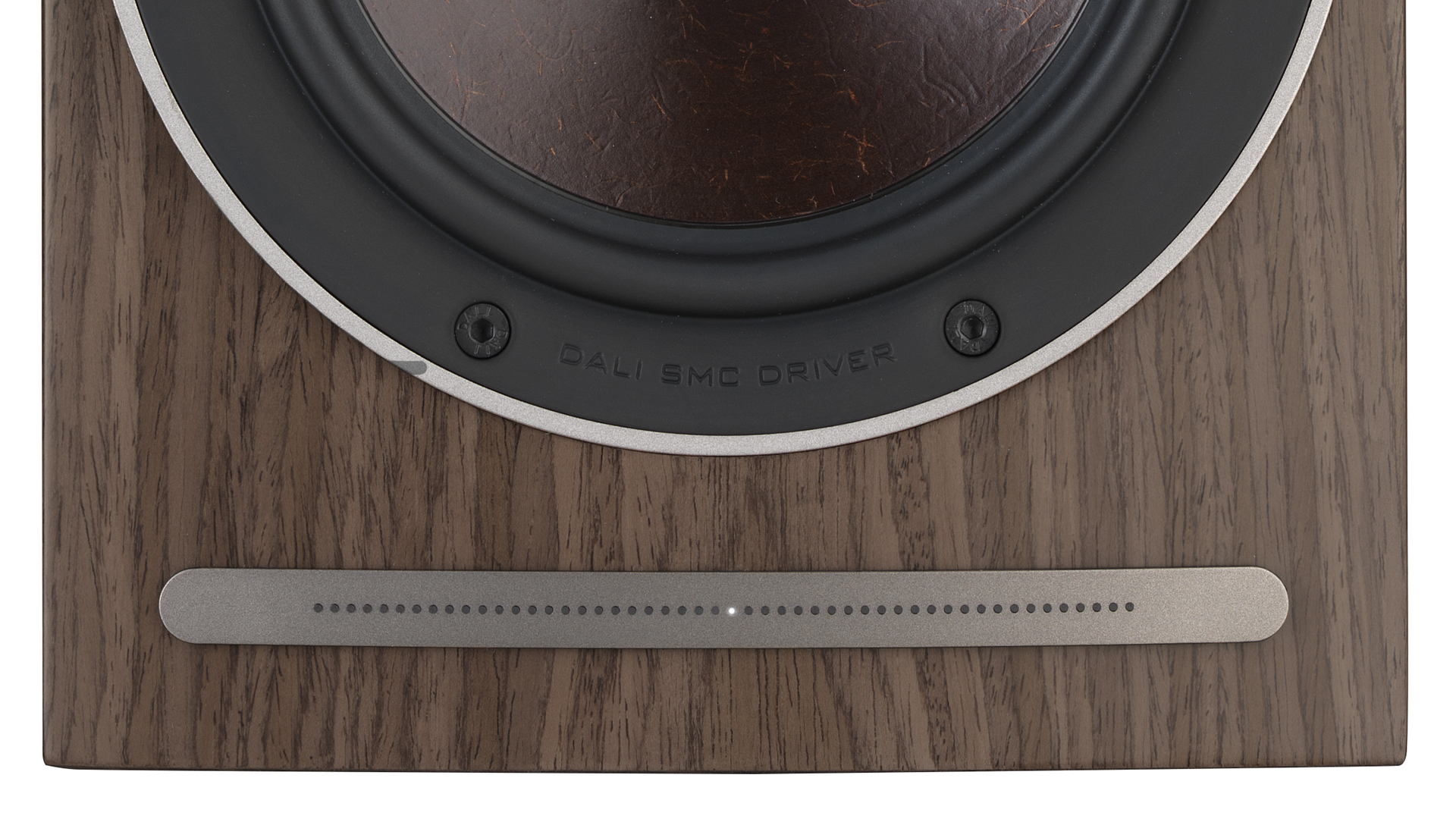What Hi-Fi? Verdict
Dali draws on its past achievements in passive and active speaker design to create this convenient and entertaining all-in-one speaker system
Pros
- +
Transparent and well-integrated
- +
Welcomes most sources
- +
Simple set-up and operation
Cons
- -
No phono input
- -
Sound Hub doesn’t match speakers
Why you can trust What Hi-Fi?
You may wonder why more hi-fi speaker brands don’t make active versions of their existing passive speakers. Stick an amplifier into the cabinet and you’re done, right?
Not quite. As demonstrated by these Dali Rubicon 2 C active standmounts, a lot of work goes into such a transition. Complex digital processing is required for optimal sound – wireless connections between the speakers need to be dependable and there’s also the housing of streaming modules and connectivity to consider.
Essentially, the Rubicon 2 Cs are an amalgamation of Dali’s five-star Rubicon 2 passive speakers (they borrow the drivers and cabinet construction) and the 2018 Callisto active speakers, from which they take the company’s capable Class D amplifier technology as well as the third box in the set-up, the Dali Sound Hub.
Compatibility

The Sound Hub is essentially the brains of the system – a streaming preamp that connects to the speakers wirelessly via Dali’s own proprietary network (on either the 2.4GHz or the 5.8GHz wi-fi band, depending on the location and quality of the connection) and transmits audio to them at 24-bit/96kHz.
Only power and a press of the ‘pair’ button on each box are required to establish a connection between them all – handy if your network is down or out of range and you still want to listen to an offline source. In fact, the Hub displays a ‘speakers connected’ status even before we’ve flipped on the speakers’ power switches.
As the back panels only bear power sockets (each speaker needs to be plugged into the mains), USB ports for firmware updates, and ‘ADC’ (analogue RCA) inputs for directly connecting an external preamp, the Sound Hub is where you’ll find inputs for connecting sources.
There are two opticals and a coaxial feeding a Burr Brown PCM1796 DAC, a pair of stereo RCAs, a 3.5mm socket and aptX HD Bluetooth. Although that list omits a phono input for hooking up a turntable, one can be accommodated through an external phono stage connected to the RCA input.
The latest hi-fi, home cinema and tech news, reviews, buying advice and deals, direct to your inbox.

There are also two modular expansion ports on the Sound Hub’s back panel too, one of which can be filled with the BluOS streaming card (included), providing fully-fledged streaming of networked libraries and music services such as Tidal, Qobuz and Spotify – all controlled via the BluOS app.
There aren’t any other add-on modules available at the moment, but the second blank plate allows Dali to create one if newer technologies come along, thus future-proofing the unit somewhat.
Although the Rubicon 2 Cs largely rely on past Dali engineering – no bad thing considering its success – the Danish company has worked hard to advance the digital signal processing side of things to further improve integration between the drivers.
While the floorstanders in the range, the Rubicon 6 Cs, use a hybrid soft dome and ribbon tweeter design in a 2.5- and 0.5-way configuration with their partnering mid/bass driver, the 2 Cs are strictly a two-way active design.
Their 29mm soft dome tweeter and 16.5cm wood fibre cone woofer are each driven directly by their own 250W Class D amplifier, and separated into their own chambers within the cabinet in an effort to get the most out of them.
Build

Of course, thanks to the Sound Hub, the speaker cabinets can sit in your living room only the power leads trailing from them. Any sources you have, such as a CD player or TV, needn’t be near them in a room, either – instead, they can be located near the Sound Hub, which, considering it’s no bigger than your average set-top box, should be easy to accommodate.

Hi-res Up to 24-bit/96kHz wireless
Outputs 2x opticals, coaxial, RCAs, 3.5mm
Bluetooth version aptX HD
Finishes x3
Dimensions (hwd) 35 x 20 x 34cm
Weight 8.4kg
The numerical LED display centering its front-panel dial is useful for adjusting and clearly visualising volume and input selection, although note that the speakers themselves have an array of lights for indicating volume too.
The Sound Hub nicely matches the slim remote with a small display, although we wish it was a better aesthetic match for the speakers, which look traditionally smart in their high gloss white lacquer finish (high gloss black and walnut veneers are also available).
The maroon-coloured mid/bass drivers, which have always been a striking design trait of Dali speakers, are present here within rubber surrounds, a bespoke design for the Rubicon 2 Cs in an effort to prevent energy loss.
And the close proximity of the neat-looking tweeter above has helped Dali create speakers that are not only smart, but compact too. Aside from their heft and volume bars (which from a distance could be mistaken for a slot port), there’s no visual telltale of their active talents.
Sound

Dali’s efforts to integrate the drivers have paid off. The Rubicon 2 Cs’ presentation is wonderfully cohesive across the frequencies: highs, lows and mids are distinctly defined, yet never stray from their seemingly effortless coordination with one another.
Such seamless integration is complemented by a pleasing tonal balance that’s solid through the midrange and bass and crisp up top. Vocal delivery is a speciality of the Dalis thanks to the sheer warmth and clarity offered, while bass notes are equally satisfying both in terms of depth and drive. The treble’s slightly forward nature is emphasised when the speakers are angled inwards and directed straight towards you, so we’d keep them firing straight ahead as Dali recommends.
We play Destroyer’s Sky’s Grey and the Dalis’ lively disposition gets under the fleeting electronic scuttling while their insightful midrange spreads Dan Bejar’s characteristically glazed vocal across the absorbing sonic plane between the two speakers. Their approach favours focus and directness over spaciousness, but it’s nicely measured and not overbearing in any way.
The Rubicon 2 Cs keep things interesting dynamically, giving listeners no opportunity to call out any lifelessness, and there’s the precision and organisation to keep things communicative when the composition thickens. Their levels of transparency and way with rhythms are among the most impressive we’ve heard in a system of this kind

However, a similarly priced system of class-leading hi-fi separates will dig up greater subtlety. It’s also worth noting that while their commendable transparency is undoubtedly one of their biggest strengths, the downside of having a revealing character is that, when given poorly recorded music, they tell it exactly how it is.
Still, feed the Dalis high-quality music, whether it’s a Qobuz or Tidal stream over BluOS, or a 24-bit FLAC from a hardwired music streamer, and you’ll be rewarded with renditions that aren’t only faithful but also fun to listen to.
Verdict
Dali has drawn on its past successes in both passive and active speaker design here, and the result is a very fine pair of active standmounts indeed. With the versatile Sound Hub the final piece in the puzzle, the Rubicon 2 Cs make for an altogether appealing all-in-one solution.
SCORES
- Sound 5
- Compatibility 5
- Build 4
MORE:
Read our Dali Rubicon 2 review
Read our Dali Callisto 6 C / Dali Sound Hub review
What Hi-Fi?, founded in 1976, is the world's leading independent guide to buying and owning hi-fi and home entertainment products. Our comprehensive tests help you buy the very best for your money, with our advice sections giving you step-by-step information on how to get even more from your music and movies. Everything is tested by our dedicated team of in-house reviewers in our custom-built test rooms in London, Reading and Bath. Our coveted five-star rating and Awards are recognised all over the world as the ultimate seal of approval, so you can buy with absolute confidence.

